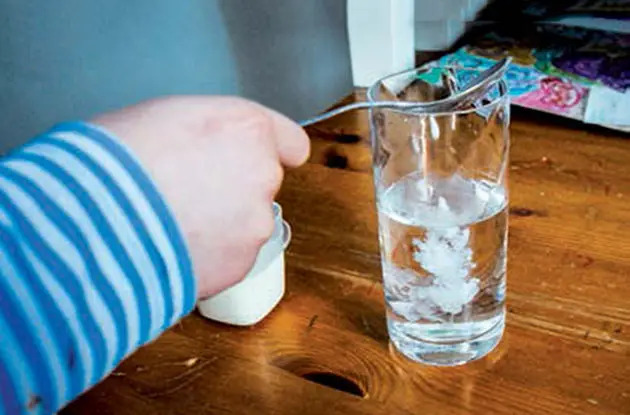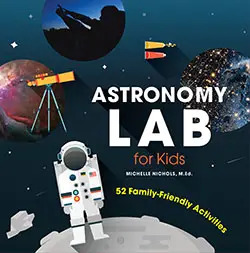The next time your kids inevitably ask, “Why is the sky blue?,” you can pull up this experiment for an at-home science lesson.
Time: 10 minutes
Materials
- 1 clear drinking glass or small glass bowl
- Water
- Milk
- Spoon
- Eyedropper (optional)
- Bright flashlight
Safety Tips and Setup Hints
- A white LED flashlight works well with this lab, such as the flashlight in many camera phones.
- It helps to see the blue color in the water if the room is darkened as much as possible.
Instructions
- Fill the glass or bowl with water until it is mostly full.
- Put a few drops of milk into the water, and stir the water with the spoon. You can use an eyedropper for this, but, if you do not have one, just carefully and slowly pour a few drops of milk from a spoon into the water. Do not pour the milk directly from the carton, as it will likely come out too quickly. Put a little bit of milk into a small bowl, and scoop a few drops into a spoon, then into the water.

- Shine the flashlight through the water. What color do you see? (The color will be fairly light.)
The Science Behind the Fun
Earth’s air is made of several gases. Most of it is nitrogen, about 78 percent, about 21 percent is oxygen, there is a little bit of a gas called argon, a little water vapor, and very small amounts of gases, such as carbon dioxide and others. While our eyes can’t see the individual bits of gases, called atoms or molecules, we can feel them when the wind blows. The amounts of these gases change depending on the seasons, the altitude, the weather, whether there has been a volcanic eruption, or other reasons, but these are generally the amounts we measure.
The light from the Sun is made of many colors, and we can see those colors when we split the Sun’s white light using a prism. When white light hits the gas molecules, most of the light—such as the reds, oranges, and yellows—is able to move its way through the molecules and pass to the ground to your eyes. However, the blue light is scattered around by the gases. It is this scattered blue light we see as a blue sky. In this lab, the big particles of milk in the water acted like the particles of air, scattering the blue light from the flashlight. You can try playing with the amount of milk in the water and the type of flashlight until you get the easiest blue color to see.
 |
Excerpted from Astronomy Lab for Kids with permission of the publisher. Photography © 2016 David Miller, Miller Visual; text © 2016 Quarto Publishing Group USA Inc., by Michelle Nichols |
RELATED: Find STEM Classes for Kids in Your Area



















